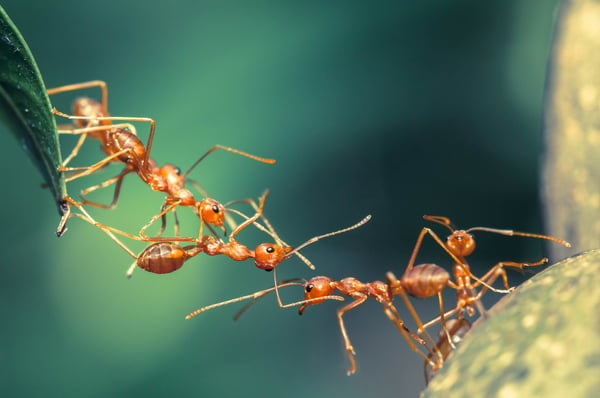Think pests in New England take a break when it rains? Think again.
This morning was a tough one. You know the struggle: it’s dreary and gray outside, the rain is making that soothing pitter-patter sound on the roof, the blankets are impossibly warm, and facing the day is a daunting and frankly unappealing task. But eventually you heave a sigh, muster up everything you’ve got, and press on.
For us, soldiering through a lazy rainy morning is a simple matter of willpower. For many pests, on the other hand, it’s life or death. Pests have a love-hate relationship with water: While most require water to survive, the fact remains that rain can flood their homes, send their food sources into hiding, and force them into places they’d rather not be—like your house. Here are some of the New England pests you’re likely to see during and after the rain.

Ants. Because many ant species build their colonies in the ground, even a small amount of rain poses a big threat of flooding. Ants must move to higher, drier areas, and your home can be an appealing option. Inside your home, they’ll have shelter and food sources—both of which can make ants so comfortable they might be hesitant to leave once the skies clear.
Centipedes. Centipedes actually prefer the damp. They’re attracted to dark, humid environments with an available food source. Centipedes are predators that will essentially eat anything smaller than they are—and that includes other pests that might be taking shelter inside your home. If the prey is moving indoors, the centipedes will follow.
Termites. Termites require specific amounts of moisture to thrive, which is a large part of why termites often swarm after a warm rainfall. Damp soil cues reproductive termites to pair off and burrow underground to begin a new colony. Rain also contributes to water damage and damp wood in homes, providing an appealing food source.
Mosquitoes. A thimbleful of water is all mosquitoes need to breed. Rainwater left stagnant in gutters, bird baths, pools, gardening equipment, pet bowls, you name it, is perfect for a female mosquito to lay her (up to 300) eggs. Larva only need half an inch of water to survive, so even a little rain can increase mosquito activity in your yard.
We’re not trying to rain on your parade, but the truth is, pests are going to be afoot even when it’s damp out. The bright side? Burgess Pest is here to help. We've got a plan for any kind of weather, any time of year.


